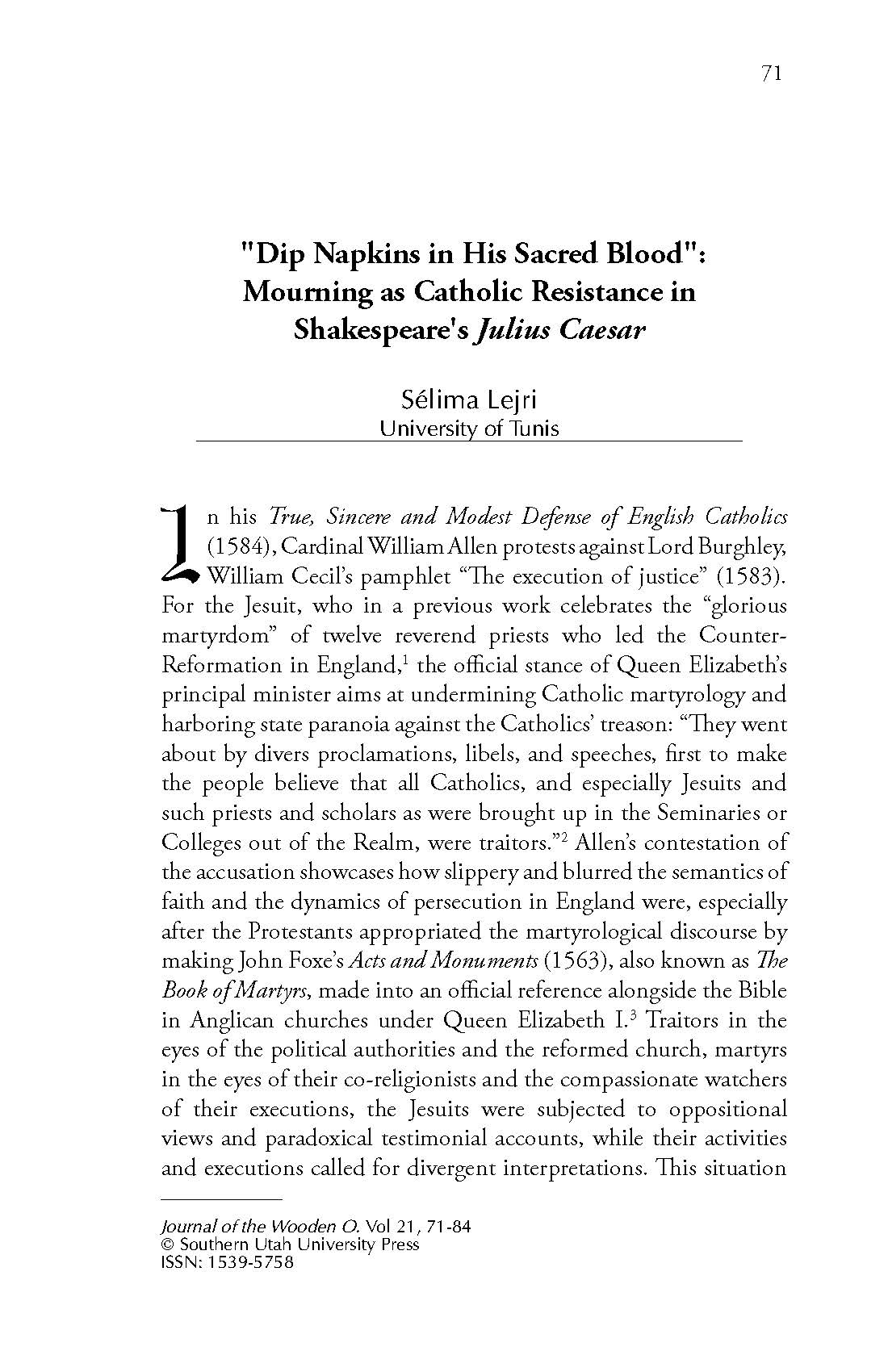"Dip Napkins in His Sacred Blood" Mourning as Catholic Resistance in Shakespeare's Julius Caesar
Main Article Content
Abstract
In his True, Sincere and Modest Defense of English Catholics (1584), Cardinal William Allen protests against Lord Burghley, William Cecil’s pamphlet “The execution of justice” (1583). For the Jesuit, who in a previous work celebrates the “glorious martyrdom” of twelve reverend priests who led the Counter-Reformation in England,1 the official stance of Queen Elizabeth’s principal minister aims at undermining Catholic martyrology and harboring state paranoia against the Catholics’ treason: “They went about by divers proclamations, libels, and speeches, first to make the people believe that all Catholics, and especially Jesuits and such priests and scholars as were brought up in the Seminaries or Colleges out of the Realm, were traitors.”2 Allen’s contestation of the accusation showcases how slippery and blurred the semantics of faith and the dynamics of persecution in England were, especially after the Protestants appropriated the martyrological discourse by making John Foxe’s Acts and Monuments (1563), also known as The Book of Martyrs, made into an official reference alongside the Bible in Anglican churches under Queen Elizabeth I.3 Traitors in the eyes of the political authorities and the reformed church, martyrs in the eyes of their co-religionists and the compassionate watchers of their executions, the Jesuits were subjected to oppositional views and paradoxical testimonial accounts, while their activities and executions called for divergent interpretations. This situation made the legal authorities fail to rally unanimous approval against the persecuted or to ensure that people’s support would not shift grounds, despite the host of tough legislations they passed during that period.4 Furthermore, this tense environment generated ambivalent feelings with regard the recently suppressed ritualized practices of collective mourning and remembrance of the dead, and, paradoxically, reinforced the need for relic-making among the English Catholics. Amidst this religious strife and along the actual sites of execution in England, the Elizabethan stage dramatized spectacles of violence, torture and suffering characterized by what French anthropologist René Girard terms mimetic rivalry that results in sacrificial crisis or failure of sacrificial ritual.5 It is in light of this anthropological perspective and against the background of “the Reformation martyrdom crisis”6 in Early Modern England that this study examines Shakespeare’s Julius Caesar, a tragedy that foregrounds the contemporary debate over the identity of the scapegoat, and particularly over the performative rituals of mourning. The first two parts analyze the differing commemorations of Caesar’s murder by the two contending camps among the Romans. The inconclusiveness of these polarized perceptions calls for speculation, in the last part, on the significance of Caesar’s ghost in the context of disputed performances of mourning.
